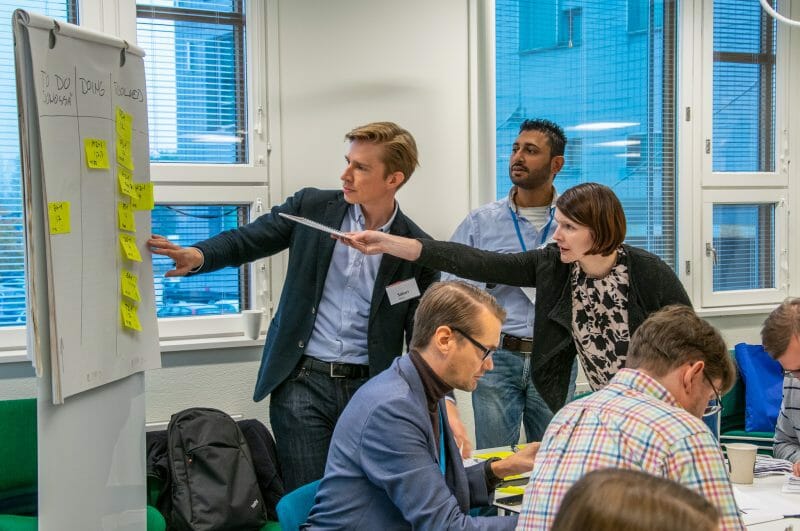When agile, how do you manage change?
“The transition from a current state to a future state”. That is how change is defined by the Association of Change Management Professionals (ACMP). This tallies well with other definitions out there and is logical: we want to do something differently than we do today, hence we go through a change.
We have a number of tools and frameworks for that transition, the challenge is that most of them need a stable “current state” as the base for our change. These days, how many of us work in static environments? Change happens all the time, all around us. And with that we need to look at change as an undercurrent – it’s constantly moving under the surface and can be treacherous if we’re not aware of its existence.
To address this dilemma we need to build a culture that embraces change, without fear of the consequences – because we can’t operate in agile ways, if every little change puts our organization in a stand-still or brings them into the valley of despair so often depicted as part of people’s change journey.
A way to move forward in the journey of tackling change in the world of Agile would be to:
- Establish the clear WHY for the organization, rather than for the individual change initiative. And make sure every little change supports that overall vision – and that the link is clear to those who have to change behaviour.
- Be open about this shift in approach, towards the leaders that have to champion the change and the employees who have to adopt it. Make it clear that change is a part of a day on the job and that everyone is expected to contribute positively to it.
- Involve, engage, co-create… change in an agile setting is not top-down or pre-planned, it is very much about involvement of people, feedback loops and constant adjustments of the course. It’s the continuous improvement mindset coming to life.
People will embrace the change they understand, often however in the way they understand it. When we abandon the planned and structured change management approach, we also give up some of the steering we believe to have with stakeholder analysis and communication plans in hand.
Maybe these were an illusion to start with? Professor in implementation and change management, Thijs Homan, operates with the concepts of “on stage” and “off stage” behaviour. The first being what people display when their manager is in the room, the second one being how they act among colleagues. Homans proposes that “there is a continuous process of sensemaking going on in informal conversations where people make sense about what is happening in the formal side of the organization”. People make sense of the change in “clouds of meaning”, jointly, not individually, by discussing amongst peers and drawing conclusions based on what they’ve heard.
These conversations cannot be controlled through structured change management programs, they are picked up by being on the floor, among the people. By engaging and involving, picking up on misperceptions and magnifying positive impacts. By having a culture of embracing and supporting ongoing change.


